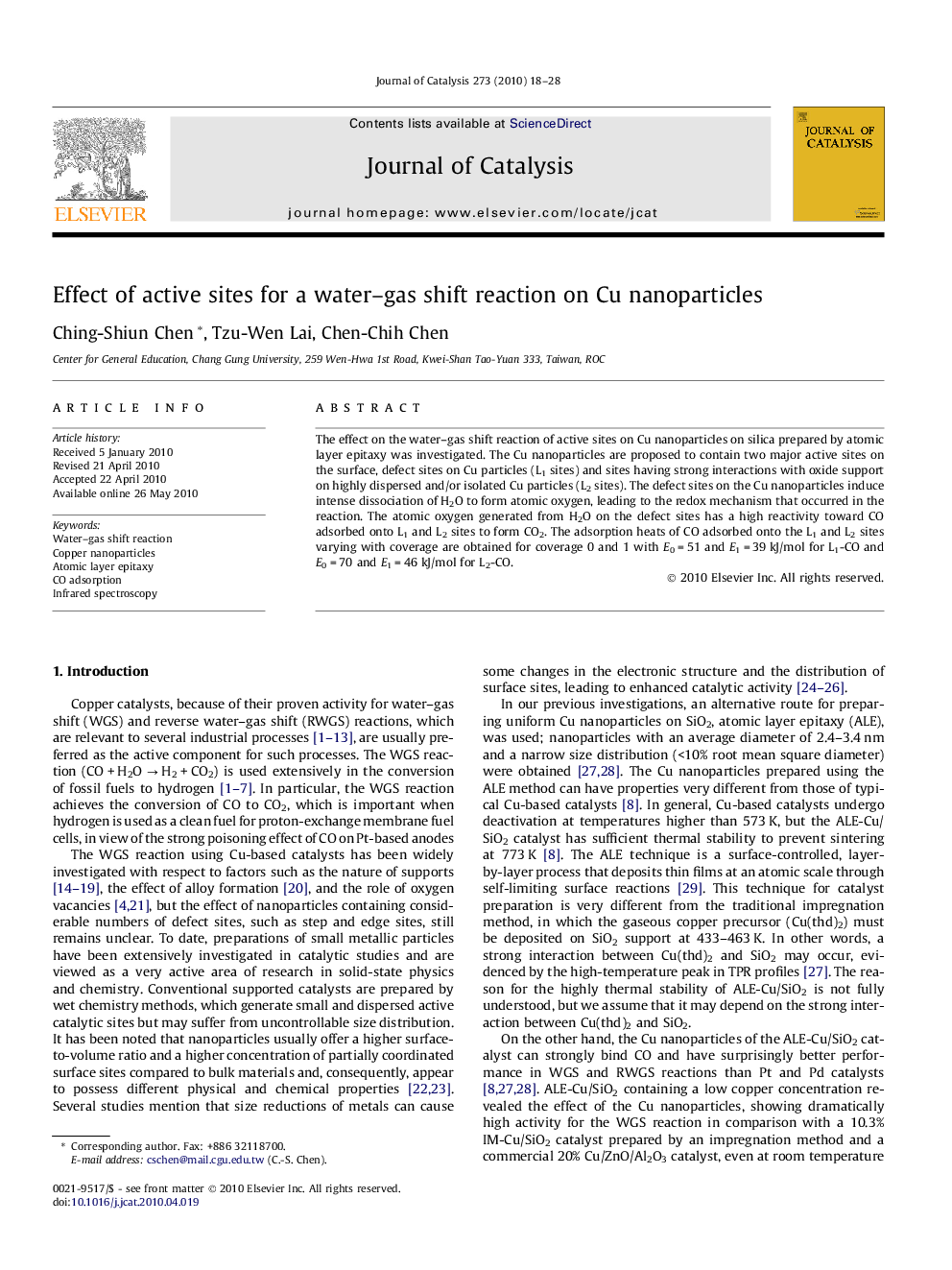| Article ID | Journal | Published Year | Pages | File Type |
|---|---|---|---|---|
| 62277 | Journal of Catalysis | 2010 | 11 Pages |
The effect on the water–gas shift reaction of active sites on Cu nanoparticles on silica prepared by atomic layer epitaxy was investigated. The Cu nanoparticles are proposed to contain two major active sites on the surface, defect sites on Cu particles (L1 sites) and sites having strong interactions with oxide support on highly dispersed and/or isolated Cu particles (L2 sites). The defect sites on the Cu nanoparticles induce intense dissociation of H2O to form atomic oxygen, leading to the redox mechanism that occurred in the reaction. The atomic oxygen generated from H2O on the defect sites has a high reactivity toward CO adsorbed onto L1 and L2 sites to form CO2. The adsorption heats of CO adsorbed onto the L1 and L2 sites varying with coverage are obtained for coverage 0 and 1 with E0 = 51 and E1 = 39 kJ/mol for L1-CO and E0 = 70 and E1 = 46 kJ/mol for L2-CO.
Graphical abstractThe defect sites on the Cu nanoparticles play a key role in the redox mechanism in the WGS reaction, which causes intense dissociation of H2O to form atomic oxygen.Figure optionsDownload full-size imageDownload high-quality image (78 K)Download as PowerPoint slide
